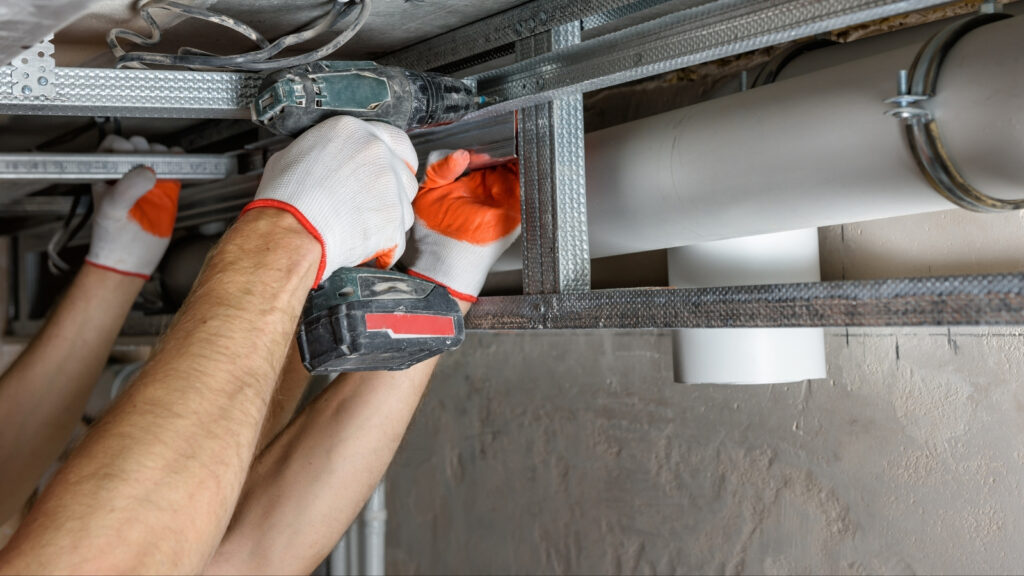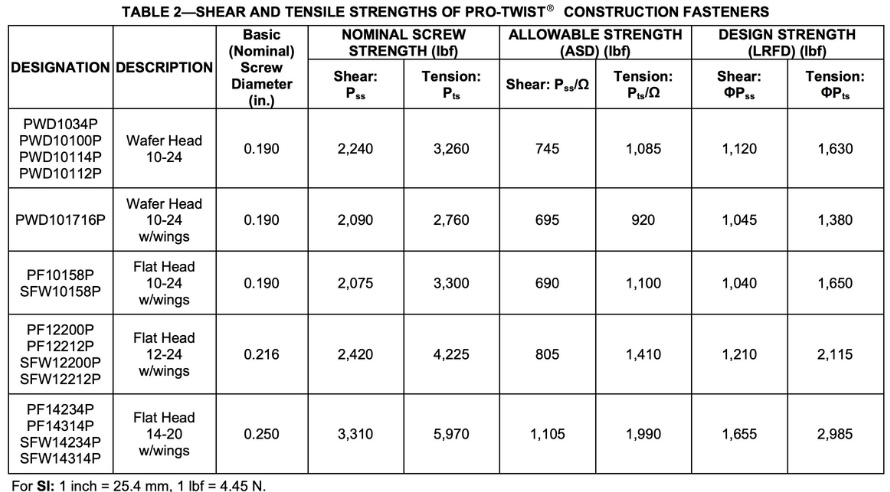
When selecting the right fastener for your project, the material it’s fabricated from should be part of the equation. Among factors like the overall design features, corrosion resistance, and length, the material should be near the top of your list.
High-load construction applications require the perfect balance of toughness and strength to avoid structural failure. Especially when a connection point undergoes shifting loads, fastener material is paramount to long-term success.
Different types of stress, such as shear, yield, and tensile, act together on fasteners in load-bearing applications. The right material resists breaking down, making it an essential factor when designing or building a new project.
We’ll cover the basics and some higher-level engineering concepts to help you understand how to select the perfect fastener for your project. Then, we’ll explore how the Pro-Twist® website makes it simple to choose and source fasteners for any project nationwide.
The structural performance of fasteners relies on several key factors. Thread, length, corrosion resistance, and head type are all tailored for specific uses on the jobsite for optimal outcomes. Though all these factors may be ideal for your use, the fastener material is potentially the most important, especially in high-load applications.
Material properties dictate strength, fatigue resistance, and deformation behavior. Striking the right balance leads to a resilient connection, while the opposite is true for a poorly matched material. Improper material application may lead to fatigue or shear failure under dynamic loads, as well as stress cracking related to corrosion.
Material selection should align with:
Especially in load-bearing applications, selecting the wrong combination of features can have a catastrophic effect. Even if every other factor in the installation and design is perfect, the wrong fastener material can be the weakest link.
When selecting the optimal fastener material for your application, there are several key properties you should consider.
Tensile strength refers to the amount of stress a fastener can withstand before reaching a breaking point. Depending on the material’s brittleness, it could go well past the point of deforming without breaking.
Yield strength is a measure of the tension a material can withstand before deforming under load. Beyond this point, it will permanently deform on the molecular level.
Fatigue resistance is a material’s ability to undergo repeated stress without deforming or experiencing failure. For dynamic loads, this is a key metric.
Ductility refers to the extent to which a material can bend or undergo deformation before breaking.
Thermal stability refers to a material’s ability to maintain its structure in the presence of extreme heat. This is especially important because metal can expand and contract over time, resulting in loosened connections.
Corrosion resistance refers to a material’s ability to withstand exposure to environmental moisture or galvanic corrosion between metals. Application-specific materials or coatings may prevent early failure.
Selecting a fastener material that meets your needs is a complex process, given the numerous factors to consider. However, technical data sheets, certifications, and evaluation reports contain nearly everything needed to make the right choice.
To better understand how common fastener materials perform in high-load scenarios, we’ve gathered the data here for easy comparison. You’ll see that some lend themselves to high-load/high-stress applications while others are better left on the shelf.
Carbon steel is one of the most commonly used materials in construction and large-scale projects. Higher ratios of carbon, ranging from 0.6% to 1.5%, result in a significant increase in hardness, tensile and yield strength, and wear resistance.
At higher percentages, carbon increases brittleness and can lead to cracking under pressure. It’s also not corrosion-resistant and requires coating or plating for protection against moisture.
Typical coatings include:
Best for: General construction applications.
Stainless steel is naturally corrosion resistant and the best choice for projects near the coast or around water. It’s available in several variants, with 304 and 316 being the most common. Unlike other non-reactive metals, stainless steel combines strength and durability with superior rust resistance, which may lead to greater project longevity.
Best for: Construction applications around water or in coastal regions.
Aluminum is not well-suited for high-load applications due to its relatively low tensile strength. As a fastener material, it’s best suited for use in situations where loads are low or moderate. Consider them for non-structural components, HVAC mounts, or other applications where reducing weight is necessary.
Best for: Lightweight assemblies where weight is a consideration.
Working through a design or project to select the best fasteners for your load expectations requires research. You’ll likely need to reference several different site documents before determining the right material for your use case. Once a structural engineer determines the forces at play in a load-bearing application, a good source of information is the ESR report.
This example, from the Pro-Twist construction screws ICC-ES report, shows tolerances in load-bearing capacity.

Manufacturers aren’t required to share these reports, but most recognize the vital importance of this data when specifying a fastener for a project.
On the Pro-Twist website, this information can be found in our Resource Library.
Our primary product page also includes an extensive list of criteria to help you select fasteners based on more specific features.
| Application | Head Type | Drive Type |
| Product Category | Thread Type | Finish or Coating |
| Hand Drive | Packaging | Base Material |
| Collated | Piece Count | |
| Gauge | Point Type | |
| Length | Self-Drilling |
Another way to narrow down our assortment is by substrates. Clicking through takes you to a list of fasteners curated for your specific application.

Each of these selection tools provides access to all fasteners that meet your criteria.
Determining the best material for your construction application or project is essential. Especially for projects where loads are dynamic and environmental factors are unpredictable, it can mean the difference between success and failure.
Material selection isn’t just about cost; it’s about ensuring your fastener performs under the specific demands of your project.
Pro-Twist fasteners are made from high-carbon steel and feature industry-leading coatings to prevent corrosion and rust. Using the tools on our website, you can easily build a submittal or create custom technical data sheets for any project.
Find out Where to Buy Pro-Twist near you.